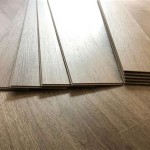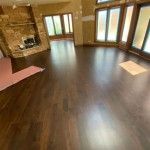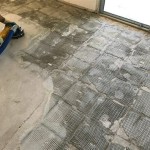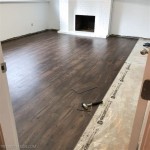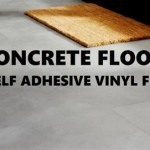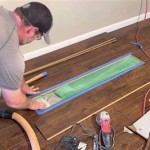Installing Vinyl Plank Flooring: An Easy And Affordable Way To Upgrade Your Home
Transform your living space with the elegance and practicality of vinyl plank flooring. As an easy-to-install and cost-effective flooring option, vinyl planks offer a myriad of benefits that make them an ideal choice for homeowners seeking to enhance their home decor.
Benefits of Vinyl Plank Flooring
Durability and Longevity: Vinyl planks are exceptionally durable and resistant to scratches, stains, and moisture, ensuring a long-lasting and hassle-free floor.
Water Resistance: Unlike traditional hardwood or laminate flooring, vinyl planks are waterproof, making them suitable for moisture-prone areas like kitchens, bathrooms, and basements.
Easy Maintenance: Vinyl planks require minimal maintenance, with regular sweeping or vacuuming sufficient to keep them looking their best.
Variety of Styles: Vinyl planks come in a wide range of colors, patterns, and textures, allowing you to customize your flooring to match any interior design aesthetic.
Affordable: Compared to other flooring materials, vinyl planks are a cost-effective option that provides excellent value without sacrificing quality.
Installing Vinyl Plank Flooring: A Step-by-Step Guide
Installing vinyl plank flooring is a relatively straightforward process that can be undertaken as a DIY project with the right preparation and tools. Follow these steps for a successful installation.
- Prepare the Subfloor: Ensure the subfloor is level, clean, and dry. Remove any existing flooring and repair any imperfections.
- Lay the Underlayment: Roll out an underlayment over the prepared subfloor to provide cushioning and sound insulation.
- Start Laying the Planks: Begin laying the planks from a corner of the room, interlocking them as you go. Use a tapping block and hammer to secure the planks.
- Cut Planks for Fit: Measure and cut planks to fit around obstacles or into smaller spaces using a utility knife or circular saw.
- Trim and Install Baseboards: Install baseboards around the perimeter of the room to conceal any gaps and provide a finished look.
Tips for a Successful Installation
Plan Ahead: Determine the amount of flooring needed before starting the installation and allow the planks to acclimate to the room temperature for several hours.
Use Quality Tools: Invest in a good tapping block and utility knife for precise cutting and secure plank installation.
Stagger the Plank Joints: Avoid lining up plank joints directly next to each other to enhance the floor's strength and durability.
Seal Any Gaps: Apply a clear caulk sealant around the perimeter of the room and any areas where planks meet to prevent water and debris from entering.
Allow for Expansion: Leave a small gap around the perimeter of the room to allow for expansion and contraction of the floor.
Conclusion
Installing vinyl plank flooring is a rewarding project that can significantly enhance the look and feel of your home. With its durability, water resistance, ease of maintenance, and affordable price point, vinyl planks offer a practical and stylish flooring solution for homeowners of all budgets. By following the steps outlined above and adhering to the tips provided, you can achieve a beautiful and long-lasting floor that will elevate your living space.

What S The Easiest Flooring To Install America

L And Stick Vinyl Plank Flooring 101 Floorings

How To Install Luxury Vinyl Plank Flooring Jenna Kate At Home

Vinyl Plank Flooring For Screened Porch Everything You Need To Know Floorings

How To Install Vinyl Plank Flooring As A Beginner Home Renovation

Flooring Materials To Consider Forbes Home

Luxury Wood Vinyl Plank Highland Homes Flooring Options

How To Prepare Your Subfloor For Vinyl Flooring Wjd
Vinyl Plank Flooring Top 7 S How To Lay Architecture Design

What Is Luxury Vinyl Plank Flooring America
See Also

